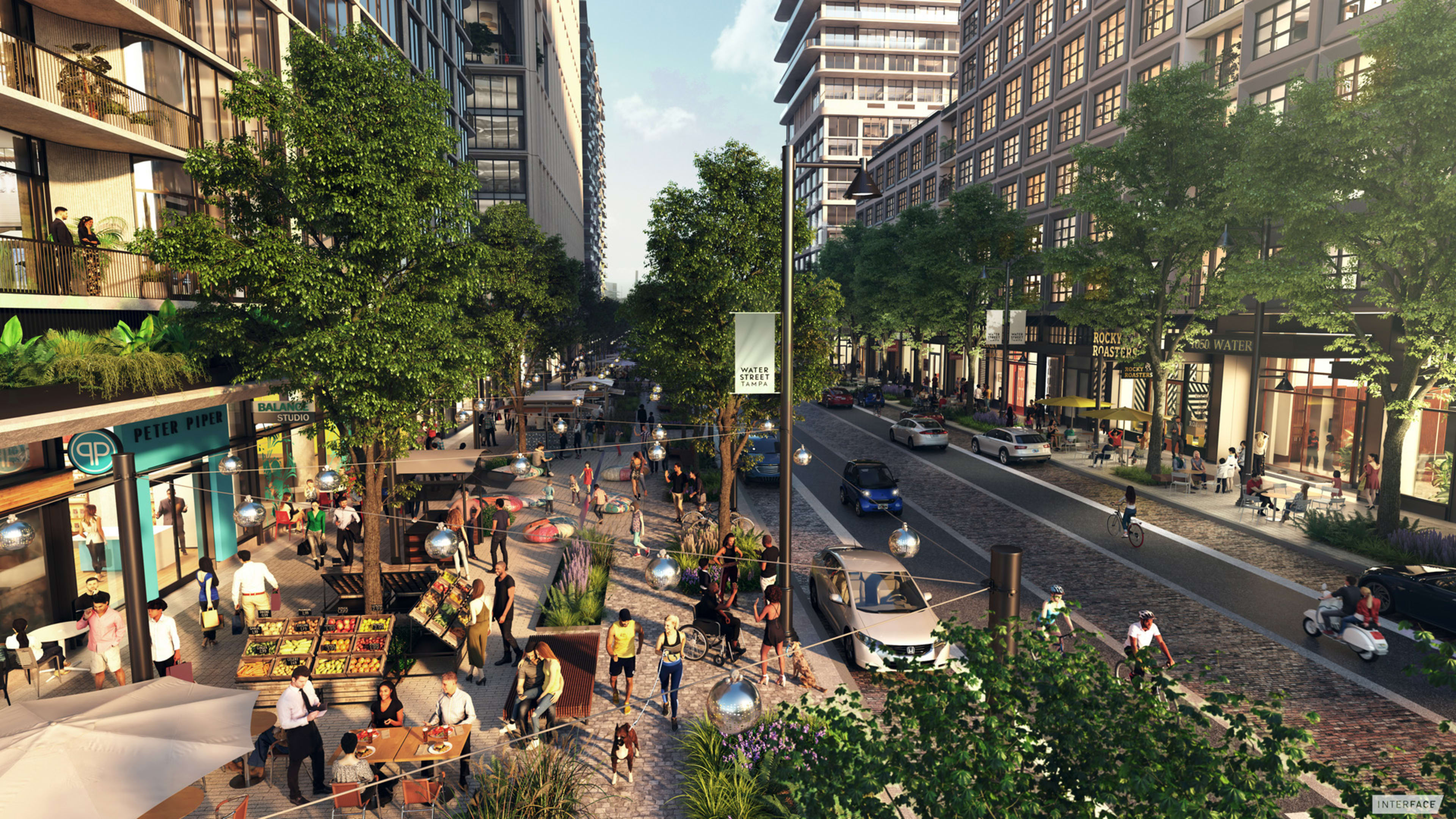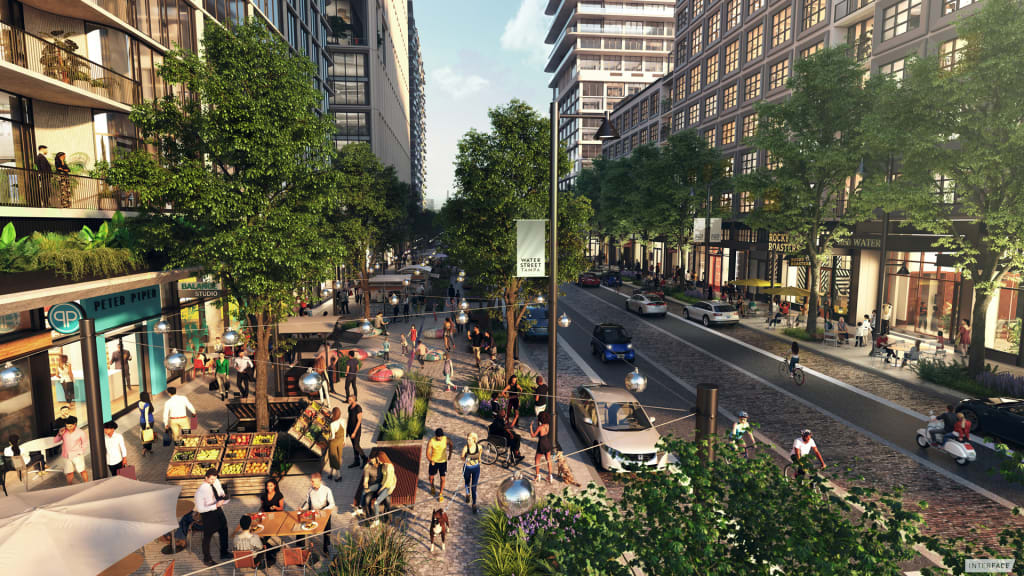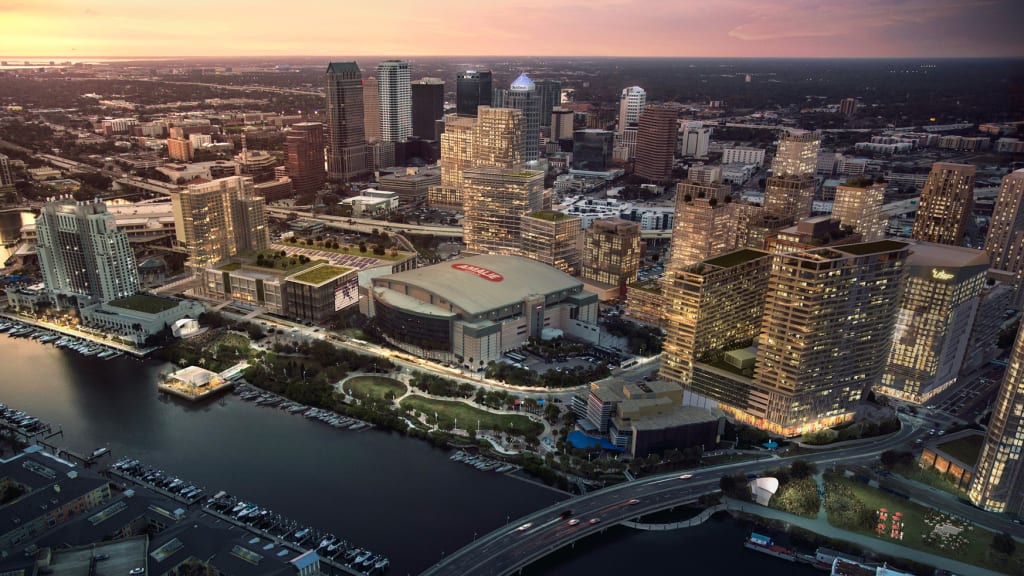When Jeff Vinik bought the Tampa Bay Lightning and its NHL arena in 2010, he got a couple of extra pieces of land as part of the deal. Like the arena, which is surrounded by parking lots and cut off from the rest of the city’s downtown by an expressway, the other lots were similarly isolated in a part of town that had seen better days. It was something of a dead zone. But it was also a blank slate.
Vinik began acquiring more lots in the area, and after years of planning and construction, a transformation is nearing completion. More than 5 million square feet of development is underway across 56 acres, with 10 new buildings rising, including housing, offices, and retail. They’re all connected by a new central corridor that prioritizes pedestrians. Developed by a partnership between Vinik and Cascade Investment, the investment fund owned by Bill Gates, the project is named after that central spine, Water Street, with the hope of making it a new urban center in the car-oriented city.

After almost a decade in the works, the project’s first elements are gradually opening. The first building, a J.W. Marriott hotel, opened in December, and the first office building and residential project will be finished in March. Cooke says a new building will open pretty much every other month going forward, and that this first big phase of the project will be largely complete by early 2022, with buildings designed by architects including Gensler, CookFox, and Morris Adjmi. For phase two, feasibility studies are now underway on infill development within the current area, and a larger potential expansion is being master-planned.
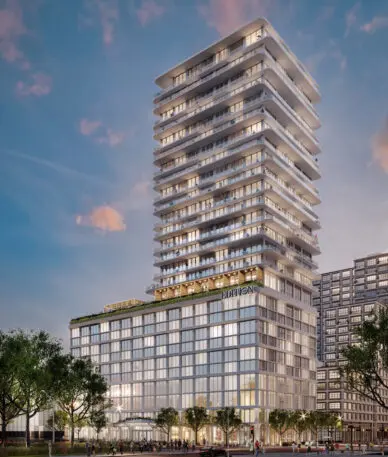
One of those is Water Street. Part of the planning process was a complete redesign of the street grid to make it the area’s central corridor leading to a waterfront park and connecting to the hockey arena, a history center, and the convention center. The plan also involved breaking apart the superblocks that had formed in the area since the 1950s. Elkus Manfredi, along with the landscape architecture firm Reed Hilderbrand, reconfigured the grid to be more easily accessible on foot, with smaller blocks and generous space for pedestrians. The centerpiece of this effort is the 45-foot-wide section on Water Street based on the Dutch planning concept of the woonerf, a hybrid road that allows cars but prioritizes pedestrians and cyclists. In total, more than half of the project’s road space is dedicated to pedestrians.
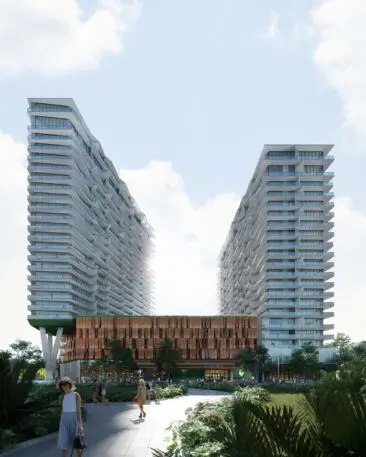
“We worried that we weren’t going to get the oscillation back and forth, that the building walls were going to be too far apart,” Manfredi says. In collaboration with Reed Hilderbrand, he says the design team began to “think about that promenade not just as hardscape or softscape but active space, whether it’s permanent active space or temporary active space.” He argues that the scale of the project and the fast pace of its first phase help make it feasible to inject this kind of life into the area.
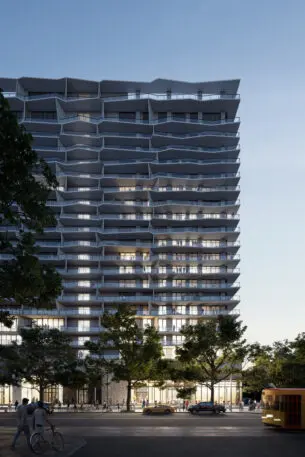
Having a strong residential population will be part of making that happen, Manfredi says, though the eventual residential population in its 3,500 units will only emerge gradually. As these people move in, Manfredi says the plan’s mix of uses and neighborhood feel—with pocket parks and locally focused retail—will help keep it from becoming just a tourist space. “Then the locals own it and hopefully resist that kind of overcommercialization,” he says.
He’s also hopeful that as the project materializes, it can have a ripple effect, spurring more mixed-use development in the city’s central business district and beyond. “We think it’s going to be a prototype,” Manfredi says. “I’ll be disappointed if it’s not copied.”
Recognize your brand’s excellence by applying to this year’s Brands That Matter Awards before the early-rate deadline, May 3.
